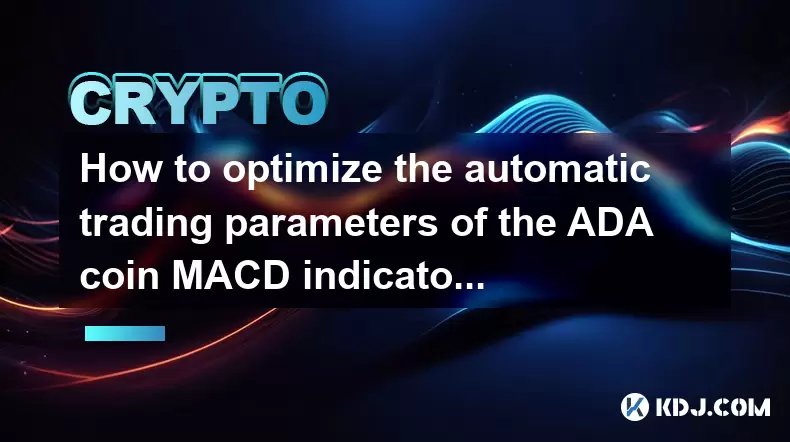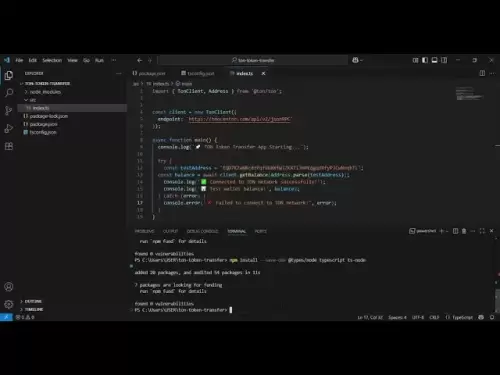-
 Bitcoin
Bitcoin $118,164.3721
-0.58% -
 Ethereum
Ethereum $3,439.2144
9.04% -
 XRP
XRP $3.2533
10.40% -
 Tether USDt
Tether USDt $1.0003
0.01% -
 BNB
BNB $719.2057
3.65% -
 Solana
Solana $176.1008
5.82% -
 USDC
USDC $0.9998
-0.01% -
 Dogecoin
Dogecoin $0.2141
6.52% -
 TRON
TRON $0.3122
3.73% -
 Cardano
Cardano $0.8144
9.21% -
 Hyperliquid
Hyperliquid $46.3175
-3.33% -
 Stellar
Stellar $0.4692
1.81% -
 Sui
Sui $4.0252
0.40% -
 Chainlink
Chainlink $17.0647
3.84% -
 Hedera
Hedera $0.2493
4.67% -
 Bitcoin Cash
Bitcoin Cash $495.9806
-0.87% -
 Avalanche
Avalanche $22.8661
3.91% -
 Shiba Inu
Shiba Inu $0.0...01442
4.59% -
 UNUS SED LEO
UNUS SED LEO $8.8195
0.03% -
 Toncoin
Toncoin $3.2344
4.19% -
 Litecoin
Litecoin $99.5361
2.51% -
 Polkadot
Polkadot $4.2226
2.56% -
 Monero
Monero $337.5953
1.12% -
 Pepe
Pepe $0.0...01358
4.99% -
 Uniswap
Uniswap $8.9955
-1.05% -
 Bitget Token
Bitget Token $4.7519
1.38% -
 Dai
Dai $0.9998
-0.03% -
 Ethena USDe
Ethena USDe $1.0002
-0.05% -
 Aave
Aave $322.0449
-2.20% -
 Bittensor
Bittensor $427.6037
-2.47%
How to optimize the automatic trading parameters of the ADA coin MACD indicator?
Optimizing ADA coin's MACD parameters involves adjusting EMAs to suit market trends, backtesting, and fine-tuning based on volatility for better trading signals.
May 19, 2025 at 10:43 pm

How to Optimize the Automatic Trading Parameters of the ADA Coin MACD Indicator?
Optimizing the automatic trading parameters of the ADA coin using the Moving Average Convergence Divergence (MACD) indicator is a crucial task for traders aiming to maximize their returns and minimize risks. The MACD indicator, which is widely used in the cryptocurrency trading community, helps in identifying potential buy and sell signals based on the momentum of the asset. This article will guide you through the process of optimizing the MACD parameters specifically for ADA coin, ensuring that you can make informed trading decisions.
Understanding the MACD Indicator
Before diving into the optimization process, it's essential to understand how the MACD indicator works. The MACD consists of two lines: the MACD line and the signal line. The MACD line is calculated by subtracting the 26-period Exponential Moving Average (EMA) from the 12-period EMA. The signal line is a 9-period EMA of the MACD line. When the MACD line crosses above the signal line, it generates a bullish signal, indicating a potential buy opportunity. Conversely, when the MACD line crosses below the signal line, it generates a bearish signal, suggesting a potential sell opportunity.
The key to optimizing the MACD for ADA coin lies in adjusting the periods of these EMAs to better suit the volatility and trends of the ADA market.
Setting Up Your Trading Platform
To begin optimizing the MACD parameters for ADA coin, you need to set up your trading platform correctly. Most trading platforms, such as TradingView or MetaTrader, allow you to customize the MACD indicator. Here's how you can set it up:
- Open your trading platform and navigate to the ADA/USD chart.
- Add the MACD indicator to the chart. This is usually done by selecting 'Indicators' and then choosing 'MACD'.
- Once the MACD indicator is added, you will see the default settings, which are typically 12, 26, and 9 for the fast, slow, and signal periods, respectively.
Adjusting the MACD Parameters
To optimize the MACD parameters for ADA coin, you need to experiment with different values for the fast, slow, and signal periods. The goal is to find a combination that provides the most accurate signals for ADA's price movements. Here's how you can adjust these parameters:
- Start by changing the fast period. Try values such as 10, 15, or 20 to see how it affects the MACD line.
- Next, adjust the slow period. Experiment with values like 20, 25, or 30 to observe the impact on the MACD line.
- Finally, modify the signal period. Test values such as 7, 9, or 11 to see how it influences the signal line.
It's important to test these adjustments over a significant period to ensure that the changes are effective across different market conditions.
Backtesting Your Optimized Parameters
Backtesting is a critical step in the optimization process. It allows you to evaluate the performance of your adjusted MACD parameters using historical data. Here's how to conduct a backtest:
- Select a historical period for backtesting. A good starting point is the last 6 months to a year of ADA's price data.
- Apply your optimized MACD parameters to the historical data and observe the generated buy and sell signals.
- Calculate the potential profits and losses based on these signals. This can be done manually or using automated backtesting tools available on many trading platforms.
By comparing the results of different parameter sets, you can identify which combination yields the best performance for ADA coin.
Fine-Tuning Based on Market Conditions
The cryptocurrency market, including ADA, is highly volatile and subject to rapid changes. Therefore, it's essential to continuously monitor and fine-tune your MACD parameters based on current market conditions. Here are some tips for fine-tuning:
- Monitor ADA's price movements and volatility. If the market becomes more volatile, you might need to adjust the fast and slow periods to capture shorter-term trends.
- Keep an eye on market news and events that could impact ADA's price. Adjust your parameters accordingly to account for potential shifts in market sentiment.
- Regularly review your backtesting results and make adjustments as needed. This ensures that your MACD parameters remain optimized for the current market environment.
Remember, optimization is an ongoing process, and what works today may not work tomorrow.
Implementing Your Optimized Strategy
Once you have optimized and backtested your MACD parameters for ADA coin, it's time to implement your strategy in real-time trading. Here's how to do it:
- Set up your trading platform with the optimized MACD parameters.
- Monitor the MACD signals closely. When the MACD line crosses above the signal line, consider it a buy signal for ADA. When the MACD line crosses below the signal line, consider it a sell signal.
- Use additional indicators or analysis to confirm the MACD signals. This can help reduce false signals and improve the accuracy of your trades.
Always practice risk management by setting stop-loss orders and not risking more than you can afford to lose.
Frequently Asked Questions
Q: Can the same MACD parameters be used for other cryptocurrencies?
A: While the process of optimizing MACD parameters is similar across different cryptocurrencies, the optimal parameters can vary due to differences in market behavior and volatility. It's recommended to optimize the MACD parameters separately for each cryptocurrency you trade.
Q: How often should I re-optimize my MACD parameters for ADA?
A: The frequency of re-optimization depends on market conditions and the performance of your current parameters. As a general rule, review and potentially re-optimize your parameters every few months or whenever there is a significant change in ADA's market behavior.
Q: Is it possible to automate the optimization process?
A: Yes, some advanced trading platforms and software offer automated optimization tools that can test multiple parameter combinations and suggest the best settings based on historical data. However, it's still important to manually review and validate these results.
Q: What other indicators can complement the MACD for ADA trading?
A: Other indicators that can complement the MACD for ADA trading include the Relative Strength Index (RSI), Bollinger Bands, and the Stochastic Oscillator. These indicators can provide additional confirmation of MACD signals and help in making more informed trading decisions.
Disclaimer:info@kdj.com
The information provided is not trading advice. kdj.com does not assume any responsibility for any investments made based on the information provided in this article. Cryptocurrencies are highly volatile and it is highly recommended that you invest with caution after thorough research!
If you believe that the content used on this website infringes your copyright, please contact us immediately (info@kdj.com) and we will delete it promptly.
- Trump, Meme Coins, and Tokens: A Wild Ride in Crypto
- 2025-07-17 18:50:12
- Ripple's EU Expansion: RLUSD Takes Center Stage, XRP's Role Defined
- 2025-07-17 18:30:12
- XRP Whale Alert: $73M Moved to Coinbase – Correction Incoming?
- 2025-07-17 19:10:14
- Sui (SUI), Mutuum Finance (MUTM), and DeFi Adoption: A Tale of Two Trajectories
- 2025-07-17 19:10:14
- Crypto Bills, ETH Surge, and Buybacks: Decoding the Latest Moves
- 2025-07-17 19:50:11
- Shiba Inu's ATH Ambitions: Can It Outpace the Competitors?
- 2025-07-17 18:30:12
Related knowledge

How to customize USDT TRC20 mining fees? Flexible adjustment tutorial
Jun 13,2025 at 01:42am
Understanding USDT TRC20 Mining FeesMining fees on the TRON (TRC20) network are essential for processing transactions. Unlike Bitcoin or Ethereum, whe...

USDT TRC20 transaction is stuck? Solution summary
Jun 14,2025 at 11:15pm
Understanding USDT TRC20 TransactionsWhen users mention that a USDT TRC20 transaction is stuck, they typically refer to a situation where the transfer...

How to cancel USDT TRC20 unconfirmed transactions? Operation guide
Jun 13,2025 at 11:01pm
Understanding USDT TRC20 Unconfirmed TransactionsWhen dealing with USDT TRC20 transactions, it’s crucial to understand what an unconfirmed transaction...

How to check USDT TRC20 balance? Introduction to multiple query methods
Jun 21,2025 at 02:42am
Understanding USDT TRC20 and Its ImportanceUSDT (Tether) is one of the most widely used stablecoins in the cryptocurrency market. It exists on multipl...

What to do if USDT TRC20 transfers are congested? Speed up trading skills
Jun 13,2025 at 09:56am
Understanding USDT TRC20 Transfer CongestionWhen transferring USDT TRC20, users may occasionally experience delays or congestion. This typically occur...

The relationship between USDT TRC20 and TRON chain: technical background analysis
Jun 12,2025 at 01:28pm
What is USDT TRC20?USDT TRC20 refers to the Tether (USDT) token issued on the TRON blockchain using the TRC-20 standard. Unlike the more commonly know...

How to customize USDT TRC20 mining fees? Flexible adjustment tutorial
Jun 13,2025 at 01:42am
Understanding USDT TRC20 Mining FeesMining fees on the TRON (TRC20) network are essential for processing transactions. Unlike Bitcoin or Ethereum, whe...

USDT TRC20 transaction is stuck? Solution summary
Jun 14,2025 at 11:15pm
Understanding USDT TRC20 TransactionsWhen users mention that a USDT TRC20 transaction is stuck, they typically refer to a situation where the transfer...

How to cancel USDT TRC20 unconfirmed transactions? Operation guide
Jun 13,2025 at 11:01pm
Understanding USDT TRC20 Unconfirmed TransactionsWhen dealing with USDT TRC20 transactions, it’s crucial to understand what an unconfirmed transaction...

How to check USDT TRC20 balance? Introduction to multiple query methods
Jun 21,2025 at 02:42am
Understanding USDT TRC20 and Its ImportanceUSDT (Tether) is one of the most widely used stablecoins in the cryptocurrency market. It exists on multipl...

What to do if USDT TRC20 transfers are congested? Speed up trading skills
Jun 13,2025 at 09:56am
Understanding USDT TRC20 Transfer CongestionWhen transferring USDT TRC20, users may occasionally experience delays or congestion. This typically occur...

The relationship between USDT TRC20 and TRON chain: technical background analysis
Jun 12,2025 at 01:28pm
What is USDT TRC20?USDT TRC20 refers to the Tether (USDT) token issued on the TRON blockchain using the TRC-20 standard. Unlike the more commonly know...
See all articles

























































































